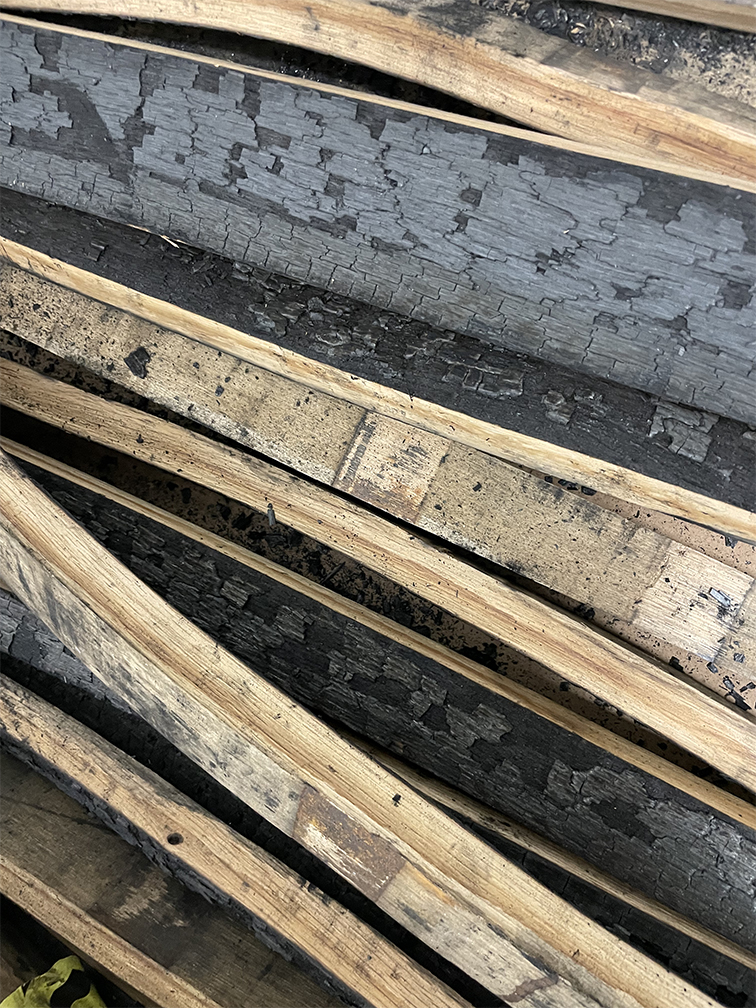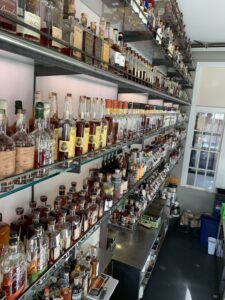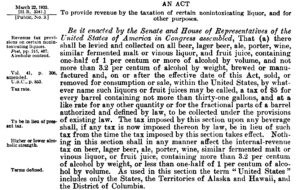
One of the other Bourbon books I picked up over the summer (and actually finished before it was over) was Kentucky Bourbon: The Early Years of Whiskeymaking by Henry G. Crowgey (University of Kentucky Press, 2008). The book focuses primarily on the history of whiskey in Kentucky during the first half of the 19th century, with Crowgey’s chronology starting at end of the 18th century and the opening of the western frontier, which at the time was Kentucky.
Crowgey eventually (inevitably?) gets around to tackling the question of how and when the name ‘Bourbon’ becomes associated with whiskey of a particular level of quality being made in and around Kentucky using a mash of corn and rye [1]. It’s during this time that people started using the designation ‘Bourbon’ for a whiskey they’d be willing to pay a higher price for, regardless of where it was being made.
More interesting to me was Crowgey’s discussion on the matter of the specific intrinsic qualities people began to associate with a ‘Bourbon’ whiskey. Apparently one of these was not the whiskey’s color, something we automatically associate with Bourbon today. And because color in Bourbon is itself evidence of the application of another trait, barrel charring, he says people couldn’t have been doing much of that in the first half of the 19th century either. He states:
“…there were no color requirements for bourbon whiskey during perhaps the entire, first half of the nineteenth century, and during the same period there was no widespread practice of charring oak barrels in which the whiskey was aged”
The term ‘requirements’ initially confused me in as much as it made me think of the kind of requirements I, as a modern drinker, associate with a document like 27 CFR, i.e. a standard of identity for Bourbon. Of course, such things simply didn’t exist at the time. Rather, Crowgey is alluding to qualities that someone making, selling, judging, or purchasing Bourbon would think to specify when describing the qualities of the product. In support of his thesis, Crowgey puts forth several types of evidence:
- Records of contemporary military purchase requisitions for ‘by the barrel’ whiskey which make no mention of charring even though other material qualities of the barrels are explicitly called out. For example, barrels should be ’strong and secure – seasoned heart of oak’ or have ‘at least 16 good hoops.’
- Trade advertisements placed by coopers during this time which never mention of charring as an intrinsic quality of what were being offered for sale as superior goods. One could argue that not all distillers wanted charred barrels, though an eager to please cooperage would have at least offered the option to prospective buyers, if there was market demand.
- Contemporary newspaper accounts of contests held at county fairs where whiskey was judged and awarded prizes along with other agricultural products, never cite color as either an entry criteria or as a trait exhibited by winning entrants [2].
- Orders placed for whiskey by historically well-known taverns and inns of the time commonly reference qualities such as age, strength and taste but quite noticeably fail to mention color at all.
When you pause to think about it, Crowgey’s making a pretty obvious point: adoption of the practice of barrel charring (regardless of how it was ‘discovered’ or by whom and when [3]) would have taken some time to become ubiquitous the way we think of it today. Also value placed on the qualities charred barrels might imbue in whiskies so aged could clearly not have happened over night. There would have been a period of transition as more distillers tried it, as more consumers were exposed to the salubrious effects on the product and, probably most importantly, as merchants saw they could charge more for whiskey so aged, before the practice became truly ubiquitous. Crowgey appears to argue that that transition took at least 50 or more years. That seems reasonable.
More than anything else, Crowgey’s narrative provided me with a particularly poignant reminder that Bourbon, as we know and enjoy it today, didn’t arise in a single divine moment, as if all its various qualities and traits had been spun out of whole cloth together. The narrative sometimes makes it seem that way, as if each improvement, like charring, once ‘discovered’ was universally embraced. It was clearly a matter of evolution, not revolution, coupled with more than a bit of good fortune.
—
Notes:
[1] – This is a little different than the question of where the name ‘Bourbon’ originated. I am not sure Crowgey covers any particularly new ground regarding this topic and I have certainly made my own personal peace with the matter, i.e. we’re never really going to know the answer, and that’s OK. Let’s move on.
[2] – In a bit of a sidebar: Crowgey mentions that as local temperance efforts grew during the first half of the 19th century, county fair contests eliminated categories for distilled spirits.
[3] – Crowgey puts forth his theory that charring was ‘introduced’ into Kentucky distilling through the writings of Harrison Hall in a book he wrote in 1818 entitled The Distiller. This would have been an indirect consequence of Hall’s recommendations regarding the preparation and maintenance of wooden mash tubs. I think it’s well established that distillers elsewhere in the world had ‘discovered’ the benefits of charring and toasting barrels long before this time. The only thing which hadn’t happened was the adoption of the practice in the storing and transport of American whiskey. Perhaps Hall provided the ‘spark’ (pun intended) that initiated the practice in Kentucky but that’s one of those things that will never be known with any kind of certainty.



![Read more about the article A Pilgrim in Shively [Part I]](https://americangrain.stream/wp-content/uploads/2022/12/shively_sites2-300x257.jpg)